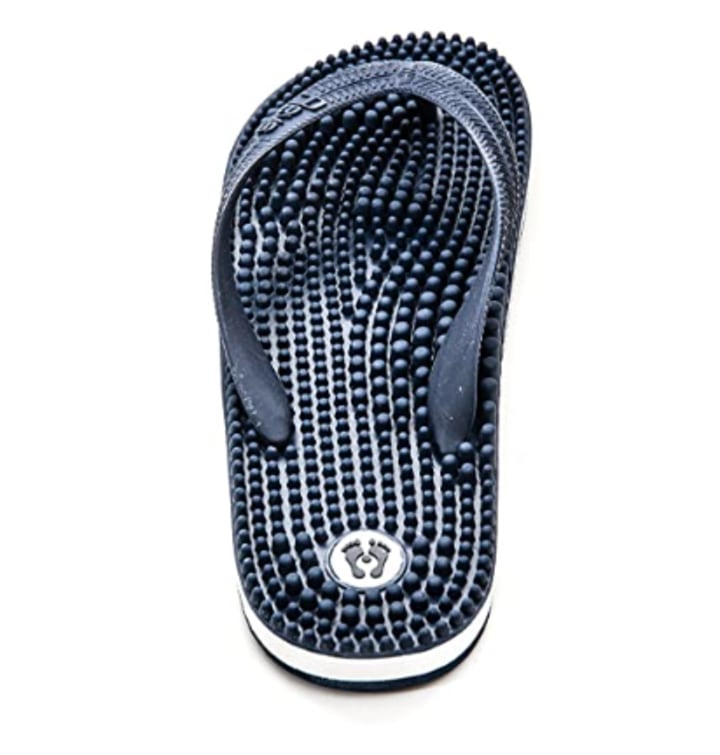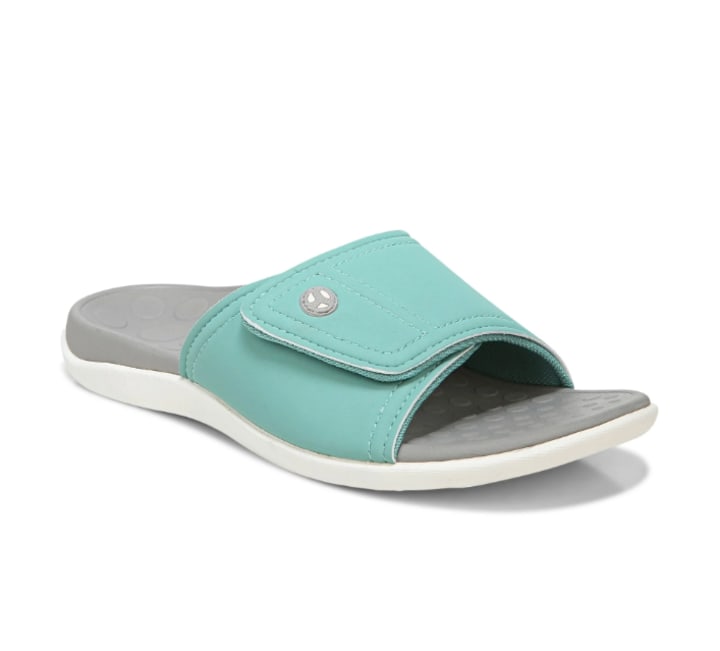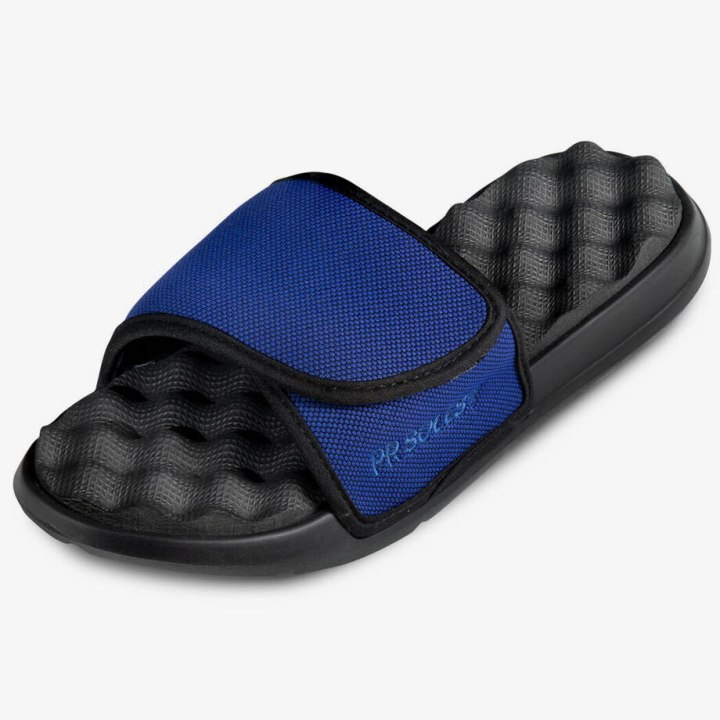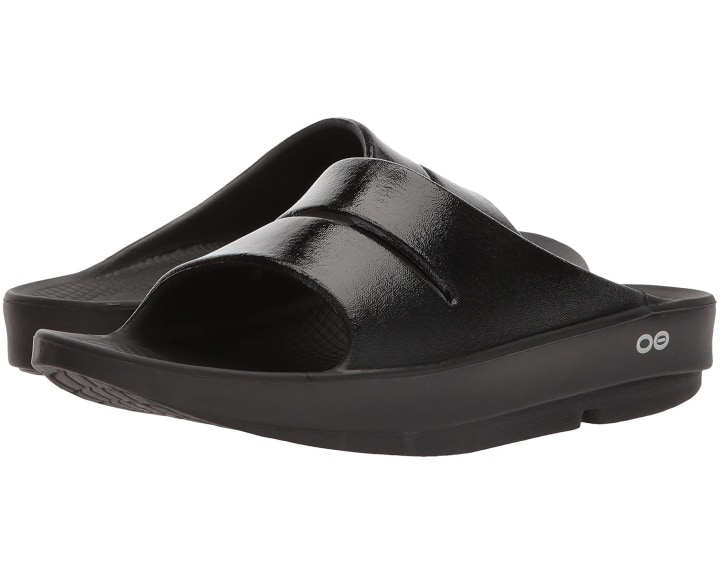Table of Contents
If you’ve gone for a long run or participated in a tough boot camp session, you may feel on top of the world — but your feet may not feel quite so euphoric. In fact, they might be achy, tired and sore, and your legs and calves aren’t feeling so great either. So, you resign yourself to the fact that you’ll just always be in pain after a hard workout, and you immediately hit the couch.
How about this for another scenario? As soon as you’re finished with your workout, you switch out of your sneakers into a pair of recovery shoes. Suddenly, that soreness in your feet disappears and you go about your day.
With the right pair of shoes, this situation is entirely possible, especially when they’re recommended by experts like Dr. Marlene Reid of Family Podiatry Center in Naperville, Illinois, and former president of the Illinois Podiatric Medical Association and American Association of Women Podiatrists, along with Dr. Emily Splichal, functional podiatrist and human movement specialist.
Why are recovery shoes necessary?
“The general idea is that feet need to recover after an extensive workout,” Reid said. “Many athletes, especially runners, find their feet fatigued or achy after a long, active session, which puts excessive demands on their feet and legs. This is also true of anyone in a profession that requires long hours of standing and walking.”
She explained that this soreness is caused by muscle overuse in which tendons are stretched beyond their normal capacity on irregular terrain or changing surfaces. Specifically, recovery shoes promote something called “active recovery” to “compensate for these painful results from the beating the athlete has experienced on their feet,” Reid added.
While Reid said that it’s key to prevent the painful strains in the first place (this can be done through stretching, addressing your gait or wearing proper shoes for the sport and for your foot type), recovery is something that’s trending.
“Foot recovery in general is an increasingly popular concept with products including foot massage tools, recovery socks and now recovery footwear,” Splichal said. “Recovery footwear often includes arch support, cushioning and…softer fabrics intended to allow the feet to take a break.”
Splichal also observed that you don’t always have to be an athlete to benefit from recovery shoes. If you’re someone who walks a lot or has been on your feet all day, you could also slip into a pair of these shoes.
“Many people choose to wear recovery footwear due to foot fatigue or foot pain, so it does not always have to be associated with after strenuous activity such as exercise,” she said.
As Splichal mentioned, recovery footwear has increased arch support, cushioning and more comfortable fabrics than average, everyday shoes. But she said that there actually isn’t too much of a difference between traditional footwear and recovery footwear.
“Rather, it’s how the individual is using the shoes,” she pointed out. “If normally a person wears no support or flat shoes, then putting on something with arch support and cushion may be perceived as a form of recovery from the constant stress they put their feet through.”
Reid believes that if a post-activity shoe is chosen specifically to overcome the negative effects experienced by an athlete, recovery footwear can be very helpful. She said that although you can certainly purchase these shoes to wear after workouts, the preferred scenario is that you have your feet evaluated by a podiatrist who will help you come up with a strategy to avoid or minimize those negative effects.
“These shoes are meant to provide temporary relief,” Reid said. “If pain persists, or you think you may have suffered more significant injury to the feet, ankle or legs after an especially long, active session, such as when running a marathon, do your feet a long-term favor and see a podiatrist.”
While most recovery shoes feature arch support and cushioning, Splichal is “personally not a big fan” of these details when it comes to recovery footwear, opting instead for a more minimalist shoe.
“I believe in active recovery or sensory stimulation for recovery,” she said. Active recovery can be accomplished through muscle strengthening by wearing a minimalist shoe or via massaging footbeds.
Podiatrist-recommended shoes to wear after workouts
adidas Adissage Slide Sandals
We’re betting that you’ve likely owned a pair of Adidas slide sandals at some point in your life and, as it turns out, they’re also excellent recovery shoes. Splichal loves them for their “essential, nubby footbeds” that help restore and massage tired feet.
“Massage of foot muscles can improve foot recovery and reduce foot and arch fatigue,” she said.
Revs Premium Massage Flip Flops
Splichal also loves the massaging footbeds of these sandals. She noted that the massaging footbeds can encourage “good circulation and blood flow to the feet and body,” which is an important part of recovery since, as Splichal shared, about two-thirds of leg muscles work together to pump blood back toward the heart. Veins concentrate in the soles of the feet and pressing and stimulating them appropriately promotes blood flow throughout your body.
Hoka Ora Recovery Slide
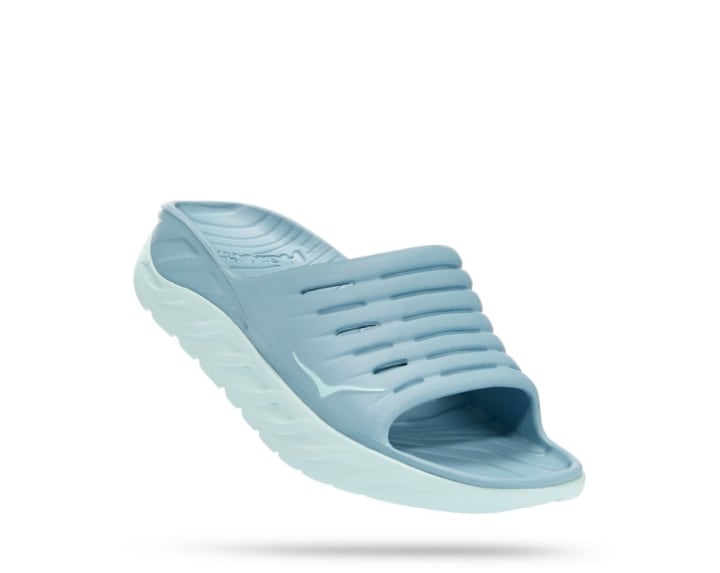
Hoka is a shoe brand that’s become the holy grail among runners because they offer such supportive running shoes. Along with their athletic footwear, the company makes recovery slides, which offer a soft surface, a rocking sole and optimal traction. Reid said that since many individuals have diminished fat padding at both the ball of the foot and/or the heel, the soft padding of these shoes after a “pounding” on these areas will “definitely give relief.”
Hoka Ora Recovery Flip
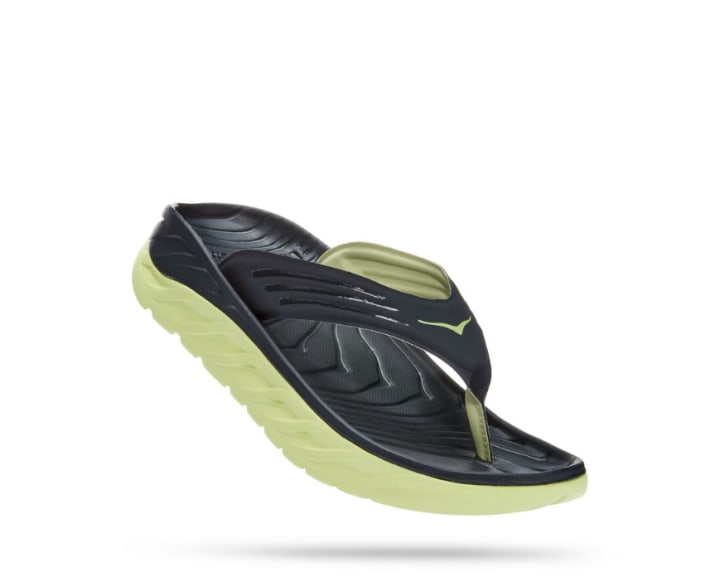
Hoka also offers a “flip-flop” style of their beloved recovery sandals that still feature the soft padding and rocking sole they’ve become famous for. In addition to wearing these particular recovery sandals that Reid recommends, she also advises wearing shoe inserts that provide shock absorption or custom orthotics that “off load the ball of the feet.”
Vionic Kiwi Slide Sandal
For a unisex option, Reid suggests these slide sandals from Vionic. Sporting soft padding, a tread that improves traction and a special design to “hug your arches” as the product description says, these sandals are available in several colors. And as many reviewers shared, these sandals have greatly alleviated their plantar fasciitis.
PR Soles La Jolla Recovery Adjustable Slide Sandals
Reid said that she’s seen several recovery shoes that provide shock absorption through “massaging” textured surfaces, something that’s good for tired, achy feet. She considers these slides as one of her top picks, complete with a structured, cushioned footbed. She said that these types of shoes are helpful for the short term if you’re swollen after your activity, assuming that the swelling isn’t due to injury. They also include adjustable straps, which Reid said are “helpful for people who do swell after activity.”
Oofos Ooahh Sport Slide Sandal
Oofos is another brand that’s adored by athletes for their quality recovery footwear. They also tend to be quite stylish, pairing practical features like shock absorption and a propriety footbed that reduces stress on the joints with a chic splatter design.
For more stories like this, check out:
Subscribe to our Stuff We Love and One Great Find newsletters, and download our TODAY app to discover deals, shopping tips, budget-friendly product recommendations and more!
https://www.today.com/shop/post-workout-recovery-shoes-t251946
 fashion rec fashion wanted
fashion rec fashion wanted

